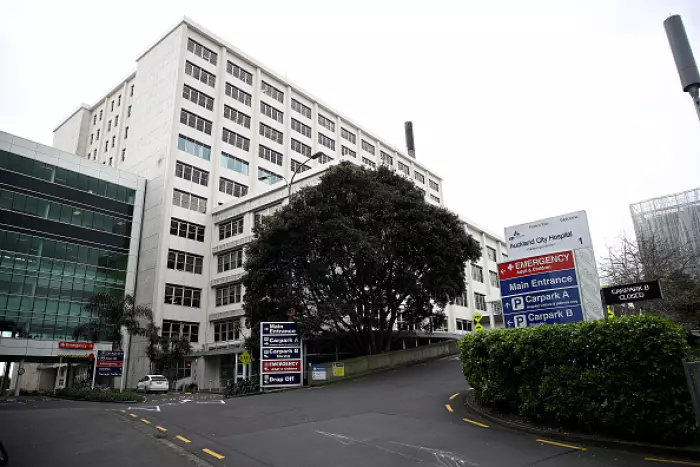My simplistic understanding of the building of aeroplanes is that they are designed, built and tested before they are flown. They are not built while they are being flown. Furthermore, they don’t use business consultants instead of engineers to build them.
But this is exactly what the government is doing with its restructuring of the health system; specifically the disestablishment of district health boards (DHBs) effective from July 1. It is now clear that this restructuring will not only not be ready by then. At best, it will be embryonic.
DHBs are a unique form of local health system government compared with other universal systems. Local governance in universal health systems is not unique. But being responsible for both primary care provided by general practices and non-government organisations (and other community care including aged care and hospital care) is.
Responsibilities include funding, planning and improving integration between primary and hospital (secondary) care.
From July, public hospitals will be directly run by a new national monolith called Health New Zealand (HNZ). However, nothing has been put in place to meet the DHBs’ current responsibilities for primary care.
Democratic deficit
A big factor behind this fiasco is the rushed nature of decision-making.
Abolishing DHBs was a relatively last-minute decision. It was never proposed by the Heather Simpson review of the health and disability system. It was never part of Labour’s election policy in the September 2020 election; quite the opposite in fact.
It was never part of any public narrative until April 2021 when new health minister Andrew Little announced it.
The critical players in this change of direction were: Ernst & Young (EY) senior partner Stephen McKernan, who was appointed to head the transition unit in September 2020; and Andrew Little, who became health minister after the election.
A huge democratic deficit sits behind this decision. But there is also a huge competence deficit, with a mere 14 months to implement a new national bureaucracy, its four regional offices, and the replacement for the community care functions presently undertaken by DHBs.
Contrasting health restructurings
Compare Labour’s health restructuring with that of the National government in the early to mid-1990s.
National implemented a flawed ideological construct in which public hospitals were required to compete with each other and with the private sector as if they were businesses and provide healthcare as a commodity rather than a public good.
But let’s put the ideology to one side. What about the restructuring required to implement it?
The 14 area health boards were replaced with 23 crown health enterprises (CHEs), but the latter were all based on existing public hospitals, which remained unchanged.
Community and primary care remained unchanged under the health ministry. The substantive restructuring was the creation of four regional authorities responsible for funding the CHEs and was based well away from the point of provision.
National’s restructuring was announced in the Budget in July 1991 but implementation was scheduled for 1 July 1993.
Consequently, there were nearly 24 months to implement its restructuring. Compare this with the around 14 months for Labour’s more complex and extensive restructuring.
Annette King’s 2001 reforms
Also, compare Little’s restructuring with Labour health minister Annette King’s establishment of DHBs in January 2001.
The substantive change was legislative, shifting from a competitive for-profit to a cooperative not-for-profit system. Healthcare migrated from being a commodity back to being a public good.
There were no substantive restructuring changes at the local level. DHBs became responsible for the public hospitals. They also became responsible for primary care, which was gradually devolved over time from the health ministry.
The only substantive restructuring was national. The National-NZ First government had established the national HFA, separate from the health ministry, replacing the four separate regional health authorities.
King disestablished it by transferring its functions to the health ministry. This did not impact on the health workforce in hospitals and communities.
National’s 1990s restructuring was driven by flawed ideology but competently implemented, helped by sufficient time to enable a smooth transition.
Labour’s early 2000s restructuring was competently implemented by not disrupting the system at the point of provision.
But Labour’s current restructuring is the opposite.
The fast-ticking clock
What characterises the current restructuring is the government’s high dependence on external business consultants to drive implementation.
The last time I witnessed such high dependence was in the early 1990s with the introduction of National’s competitive business model. Business consultants have been pivotal to the drive to abolish DHBs. EY’s health consultancy has grown immensely since 2020.
There is much ill-ease within the health system about this relationship with business consultants and their influence over the persuadable health minister.
Unfortunately, a top-down ‘directional’ culture means there is no avenue to express this uneasiness other than in “corridor discussions”.
DHBs are not just structures. More important is their statutory purpose. They are responsible for the full spectrum of the health of defined geographic populations from community to hospital.
This leads to the integration of patient care between the community and the hospital. The better this integration is implemented, the more rising the acute demand on public hospitals can be controlled.
This matters because acute demand rising at a greater rate than population growth has been a big driver of DHB deficits.
HNZ will both take over the funding and provision of healthcare from the health ministry and replace DHBs. The latter means HNZ will run both public hospitals and community care.
But the chief executive of HNZ was only appointed four days before Christmas. Its senior leadership tiers have yet to be appointed.
The staffing and location of its four regional offices, assumed to be Auckland, Hamilton, Wellington and Christchurch, have yet to be determined.
Public hospitals will continue as normal although under much more distant bureaucratic operational control.
But DHBs’ work in primary care is to be picked up by new creations called “localities”. The Simpson review had previously recommended localities but in the context of them being nurtured and supported by DHBs.
"Ghost" localities
The problem is that there is no idea what a locality might be other than being responsible for a geographically defined population.
But there is nothing substantive on what they will be like or what they will do. Localities are only at the stage of prototypes and are not scheduled to be up and running until 2024. If you tried to knock on the door of a locality you would either see nothing or, more likely, discover that there is no door.
The clock is ticking. The only things we can be confident about are that the localities will be late arrivals, be less able to advocate the interests of primary care, and be under-resourced.
Meanwhile, many DHB senior managers, including some chief executives, will move on to pursue other interests rather than work in this new system, having been devalued by the process of abolition.
The same may well happen on a smaller scale in the health ministry, which is losing a big part of its role to HNZ. The director general, Ashley Bloomfield, and one of his deputies have already announced their departures and other departures from the senior leadership can be expected.
Many ministry staff also feel devalued.
A discontented winter
So where does this leave the health system in July and beyond?
It won’t collapse. Doctors, nurses and other health professionals will continue to maintain health services in their communities and hospitals as best they are able. They are experts at making a bad system work.
However, they will be doing this “God’s work” in an environment of health system leadership dysfunction and at an additional cost. This stumbling will only add to the enormous stress to which they are presently subjected.
Through continuous distraction, this dysfunctional leadership overhead will also mean further delay in addressing the pressing demands on the health system. Primarily, this begins with severe workforce shortages. This distraction began when the government embarked on restructuring and will now continue for some time beyond.
The good news is that business consultants will do very well picking up contracts to design health plans, localities and other lucrative opportunities!
If an airline would not build a plane while flying it (and use business consultants instead of engineers to build it), why would a government do so with a public health system?
If this isn’t incompetence, what does that word actually mean?
Oh! Did I forget to say that all of this is being done in the midst of a pandemic?














